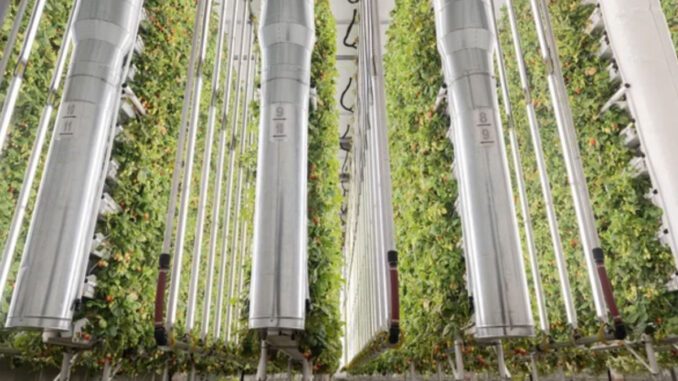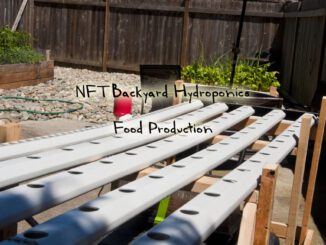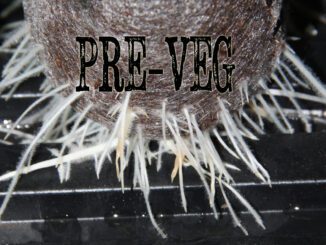
Vertical Farms Today and Astronauts Tomorrow
The buzzy industry of robotic pollinators is setting its sights on indoor farms for urban—and extraterrestrial—environments
Robotic Bees | Molly Glick |
In vertical farming operations, artificial lights and artificial intelligence coax plants, stacked densely on towering shelves rather than spread over a field, to grow indoors with minimal human intervention. That’s the goal. But despite lofty promises of bringing fresh produce to local markets, these systems have not yet provided a climate-friendly way to feed the world’s growing population. Can robotic “bees,” a buzzy technology straight out of science fiction, rescue these high-tech operations?
The world’s first commercial vertical farm opened in Singapore in 2012. More businesses cropped up in the following years, with major players such as Infarm and AeroFarms securing hundreds of millions in funding over the next decade. With the help of sustainable systems such as hydroponics, as well as artificial intelligence to closely monitor plant growth and water usage, some companies and experts claim these futuristic farms could tackle global food insecurity—without the massive land and water footprint of conventional operations.
These farms “have the potential to contribute a meaningful amount to our diets,” says Thomas Graham, who researches controlled environment agriculture at the University of Guelph in Ontario. And companies can place them nearly anywhere.
Many vertical farms’ hopes have dried up over the past year, however. Recent inflation and worldwide skyrocketing energy prices, fueled by Russia’s invasion of Ukraine, rendered these farms’ near-constant electricity demand unaffordable. This past fall Infarm announced it was laying off more than half of its employees, and AeroFarms recently filedfor bankruptcy. Meanwhile other vertical farm ventures are also facingfinancial challenges.
It doesn’t help that vertical farms currently have a limited range of offerings; most grow only greens such as lettuce and herbs because they use low amounts of water and are relatively easy to cultivate indoors via hydroponics thanks to their speedy development. “Some of the work we’re doing is moving past just leafy greens,” Graham says. “You can’t feed the world on lettuce.”
To truly take on food insecurity, vertical farms must expand their offerings, and that means finding a way to bring pollinators into high-tech indoor farming operations. Around one third of the crops we eat require pollinators such as bees and bats to grow. It’s difficult to get the job done in a vertical farm because domesticated honeybees, one of the most popular pollinators for commercial growers, have trouble navigatingunder artificial light, and pollinating by hand is extremely time intensive and thus expensive. To solve the problem, researchers have been working on robotic pollinators for more than a decade. But such pollinators have only recently made their way to universities and commercial operations.
BEE BOTS TO THE RESCUE
Bots aren’t new to farms. Since the mid-20th century researchers have explored ways to automate agriculture, including tractors with automated steering. By the 1980s and 1990s, engineers had begun tinkering with task-specific devices such as a robotic melon harvester and tomato-picking robots. Companies are now developing autonomous bots to harvest a variety of produce, and some devices can also accomplish additional tasks, including weeding, pesticide spraying and disease monitoring. Artificial intelligence helps most of these tools organize and process information from their onboard sensors—often multispectral cameras, which can pick up on differences in the types of light reflected by plants. Those differences provide clues about a crop’s health, such as ripeness in fruit or signs of damage.
Although most agricultural-machine research still focuses on produce-picking bots, more teams are now aiming to automate pollination as well, says Mahla Nejati, a research fellow at the University of Auckland in New Zealand, who works on farming-oriented robotics and AI systems. For her Ph.D. project, Nejati developed the computer vision system for an autonomous kiwi- and apple-picking bot designed for orchards. Eventually, her colleagues had a revelation: because they were already picking robotically, it would have been “better to have started earlier with the pollination,” Nejati says.
Now scientists and businesses around the world are grappling with the best ways to design and implement robo pollinators. This is not a simple task, says Yu Gu, a roboticist at West Virginia University, who is developing a six-armed pollinating machine called the StickBug. To build widely useable pollinators, “I think it’s a big problem that there’s so many types of flowers and so many types of agriculture settings,” he says.
Some researchers have carried their work outside of academia and into the market. Siddharth Jadhav, who previously studied drone aerodynamics at the National University of Singapore, founded a company called Polybee in 2019. He and his colleagues adapt widely available mini drones for various types of indoor agriculture operations, including vertical farms and greenhouses. Polybee’s AI-powered software instructs drones equipped with color camera sensors that measure key traits for growers to fly near plants. Then the drones carefully disturb the air around them to vibrate flowers when the conditions inside greenhouses (such as temperature and humidity) are optimal for pollination, Jadhav says. This activity shakes the pollen out of the flower and kicks off the fertilization process.
Polybee currently sells its pollination system to commercial tomato greenhouses in Australia. (Compared with many other food crops, tomato pollination is relatively straightforward because the plants’ flowers have both male and female parts.) The team has also run trials with indoor vertical farming companies, Jadhav says, although “we do not have many commercial vertical farms that grow fruit crops at scale yet.”
An Israel-based company called Arugga also sells bots to tomato greenhouses. Its roving ground robot, aptly named Polly, moves between rows of plants and blasts pulses of air to prompt pollination. The process is mostly autonomous. For now, however, human operators must move Polly between rows by operating a tablet. Arugga may eventually delve into vertical farming but only if that market becomes more profitable, says Eytan Heller, the company’s co-founder and vice president of business development.
Still, if robotic pollinators do pan out for vertical farms, they could offer multiple advantages. For one, they could reduce infections between plants because bees can spread diseases that cause major damage to farms. For more than two decades, scientists around the world have suggested that bumblebees can spread viruses to previously uninfected tomatoes that can render them unsellable. Commercially developed bees deployed in greenhouses can also slip outside and infect wild bees nearby, which are already experiencing a rapid decline that is largely linked to factors such as climate change, urbanization and pesticide use. This is especially damaging for the plants that rely on those outdoor pollinators because they can’t fall back on their own mechanical substitutes. According to Nejati, bots perform best indoors, where they can move around highly structured environments and avoid unpredictable weather and temperatures.
WHAT’S NEXT FOR ROBO BEES
While Polybee and Arugga claim they’ve got the tomato pollination game down pat, they’re still working on modifying their products to work with other types of plants. Polybee is currently running trials with strawberries, and Arugga says its tools can be adjusted to work with plenty of other crops, such as strawberries and blueberries.
But each plant comes with its own complexities, Gu says. While Arugga plans to use its pulsing-air method for various types of fruit, Gu and his colleagues have found that certain varieties may require direct contact with robots, similar to the natural method performed by bees. After collaborating with a range of experts, including entomologists and horticulturalists, he thinks that some types of berries, for example, likely benefit from contact-based pollination. Graham agrees that certain berries probably would benefit from direct interactions with robots, perhaps small drones.
Regardless of the fruit, bots will have to work gently to avoid damaging flowers, which tend to be delicate. Gu compares the pollination process to “robotic surgery” and says that, for now, the drone airflow method will likely be limited to working with several plants at once rather than individuals. “The crop that needs precision pollination [is] disturbed by the airflow,” he says. “It’s difficult to operate that precisely.”
Even if robotic pollinators rescue vertical farms from obsolescence, it’s unlikely that any type of indoor agriculture can entirely replace the fields humans have relied on for millennia. But he suggests that vertical farms could supplement outdoor crops without taking up too much space. For instance, they can be built on abandoned pieces of land. “This is a complementary way of doing things,” Graham says. “We need to rethink agriculture in the face of climate change and population growth, but [vertical farms] shouldn’t be looked at as competitive—because they’re not.”
Vertical farms could additionally aid another location that’s short on natural resources: outer space. Graham, who also researches food production on the final frontier, says robotic pollinators could be particularly helpful in this environment. While scientists already plan to bring living insects to space to work as pollinators and to eat waste, the insects’ metal counterparts would likely live longer. (“Worker” bumblebees only survive for a few weeks.) Astronauts could even 3-D-print these tools off-planet.
Original Article: https://www.scientificamerican.com/article/robotic-bees-could-support-vertical-farms-today-and-astronauts-tomorrow/



